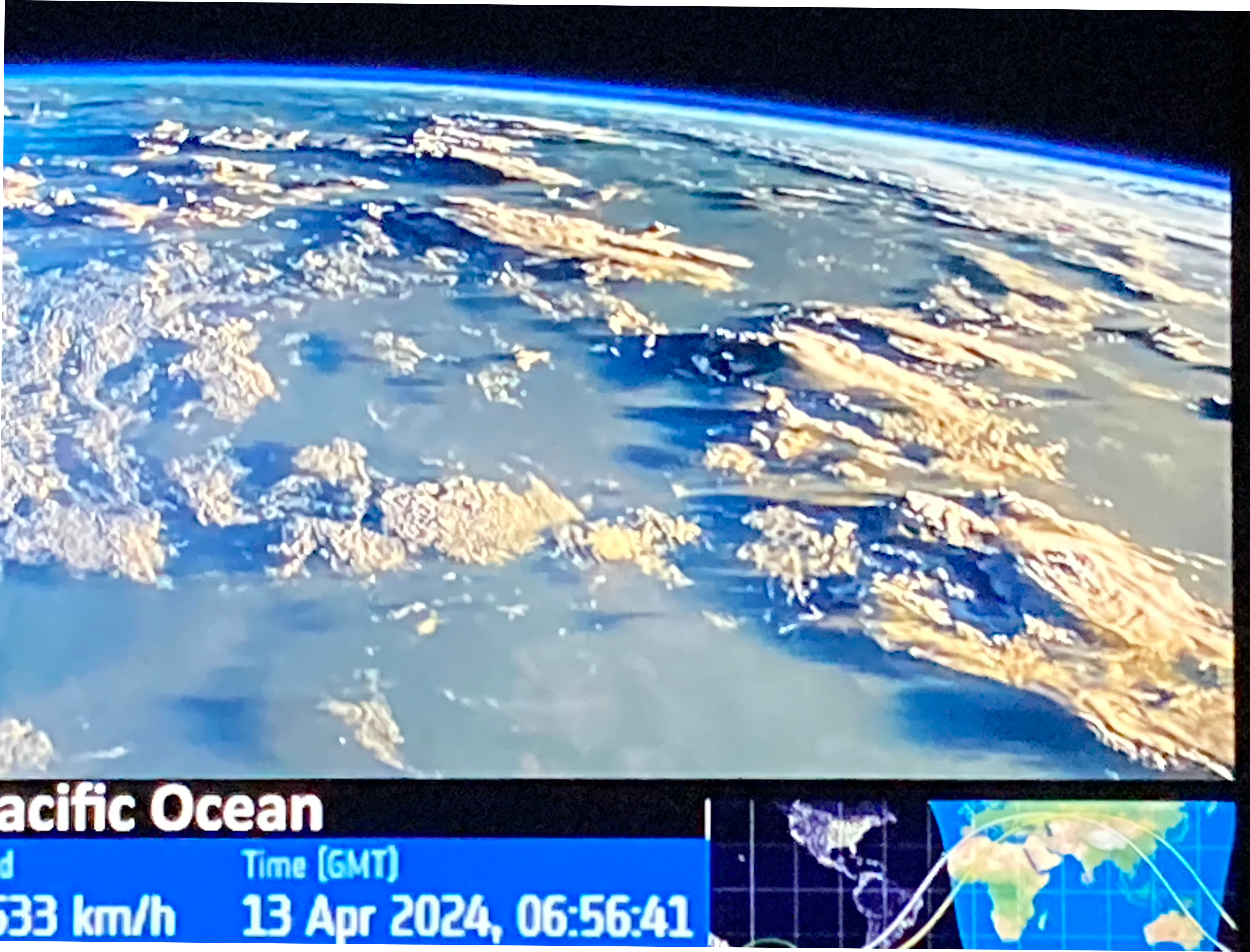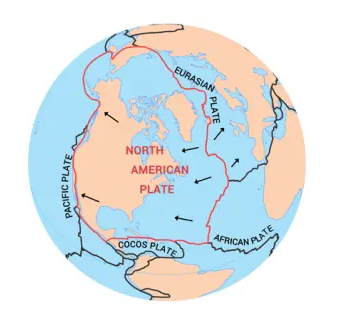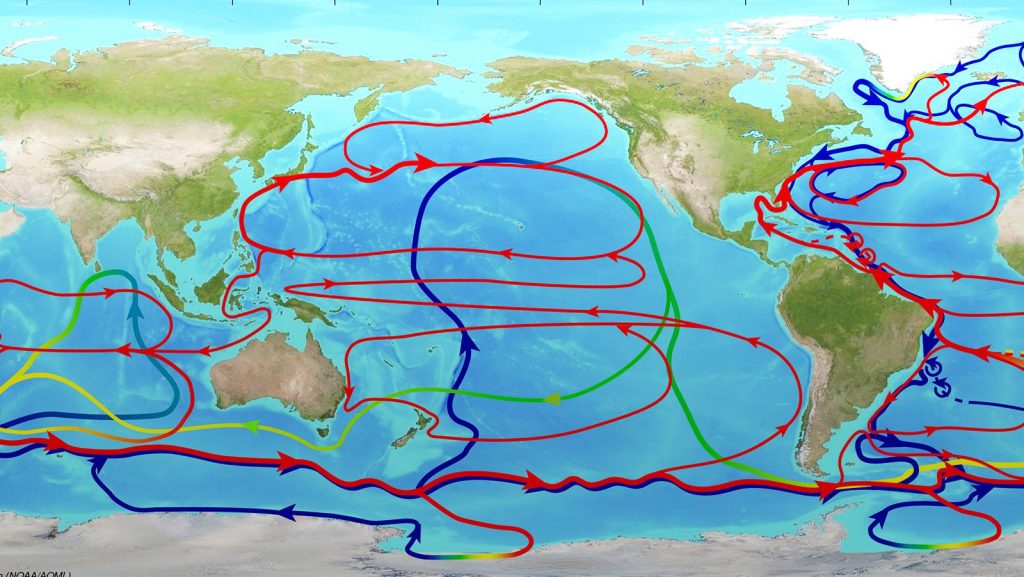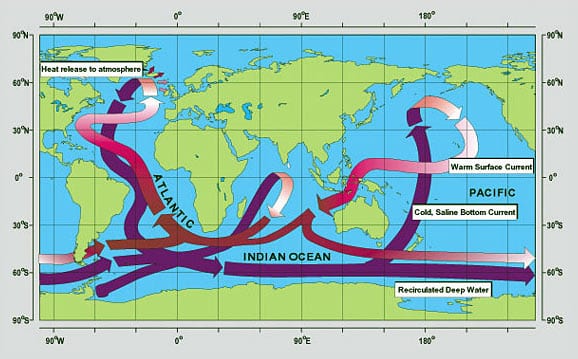Climate cycling is the natural warming and cooling of the Earth’s atmosphere and oceans. The most easily recognizable change are glaciers. This is especially important in the northern hemisphere.

When glaciers grow in the arctic and above the 47th parallel, this will help to sink both the North American and Eurasian tectonic plates. And this allows for the ocean’s current and more specifically the north pacific current and the Gulf Stream to flow a little more quickly. This I believe allows for something similar to a wind chill effect.
And with the Earth’s atmosphere, notice how 1 blue line becomes 3 layers of the Earth’s atmosphere? Also, anvil clouds being stopped by a “greenhouse type barrier” called the tropopause can be seen. Any cloud that is flat on top is an anvil cloud. The tropopause is defined by its lapse rate (temperature change per km).
Why this matters is because in 1827 Joseph Fourier determined that the Earth was too far away from the Sun to be warmed by it. If that is true and the Earth does indeed have a “greenhouse effect”, what is causing its barrier to rise? As Fourier said, the Sun “IS NOT” close enough to the Earth to warm the atmosphere to the degree that it has been warmed. He did not consider that what’s become known as the laws of thermodynamics caused the Earth’s atmosphere to expand when the Sun rises in the morning.
What does have the energy are the Van Allen radiation belts have to do with anything? https://climate-cycling.com/earths-greenhouse-the-tropopause
I will be updating my website to better clarify such a null hypothesis
People normally use this method to see whether some ‘complex’ model fits the data significantly better than a ‘simple’ model (the null hypothesis). — Neuroskeptic, Discover Magazine, 6 May 2014

If you zoom in (control and +) and look at the ozone layer and the troposphere, you will see where they literally influence each other through the tropopause. That shows that the tropopause is interconnected similar to a “Cold Fusion” bonding (sharing of energies, ionic bonding).
When glaciers are either growing or melting as they are now doing to some extent, this changes the Earth’s moment of inertia. And this changes the distance the Moon orbits the Earth. And the closer the Moon is to the Earth the more it acts like a pump. High and low tides are an example while an increased number of earthquakes when the Moon is closer to the Earth.
Then when the North American and the Eurasian tectonic plates sink in the arctic, Newton says there will be an equally opposing effect. This changes the depth of the ocean because the bottom of the seafloor in the arctic will drop. Then when glaciers melt they’ll start rebounding.
https://www.aoml.noaa.gov/deep-ocean-circulation-in-the-south-atlantic/

And this brings into play the thermohaline circulation which is the Earth’s conveyor system for moving water through all of its seas. It takes about 800 years for it to complete 1 cycle. And it would be the effect that north flowing ocean currents have on regional climate variance. This would have different regions warm and cool differently because of how warm air rising from north flowing ocean currents influences the jet stream. They do have a more basic image on NOAA’s website and the 2nd image is the basic circulation
https://www.aoml.noaa.gov/deep-ocean-circulation-in-the-south-atlantic/
As anyone can tell, there are large eddies or recirculation gyres not in the “cleaner” image.
With global warming, it seems that it starts when the Moon’s orbit comes closer to the Earth. Glaciers north of 45º helps to change the Earth’s moment of inertia.When angular momentum (spin) is conserved this way, the Earth spins faster. And this allows for the Moon to cause a change in the Earth’s gravity, literally.
This creates a pumping action which can open deep sea vents which allws the waters around Greenland to warm. Currently the Greenland Sea abyss is the fastest warming body of water on the Earth. https://www.sciencedaily.com/releases/2013/09/130925102833.htm
When warm water from deep sea vents (magnitude 6.0 earthquakes seem to open and close deep sea vents) reach the surface then this helps to warm the arctic. As a result, glaciers will start melting. And when they do this allows for tectonic plate rebound. This will slow both the north pacific current and the Gulf Stream. When they slow they will release conserved heat content in the form of momentum = mass*velocity = 1/2mass*velocity^2 = Kinetic Energy.
When momentum decreases then mass is released so that water will reach an equilibrium relative to its momentum and the field (body of water) it is in. An example of this are more intense storms because a body of water is releasing stored energy in the form of convection (water vapor).
And during a warming period the Earth’s spin will slow. As a result it’s gravity will have a slight decrease and then the Moon’s orbit will become more elliptical. And this will allow for the Earth’s own orbit to slightly increase because as the Earth’s spin slows the Sun’s orbital gravity will slightly increase the velocity of the Earth. And in time these patterns will lead to another ice age. When the Earth’s orbital velocity around the Sun has a slight increase then the Sun’s gravity assist https://science.nasa.gov/learn/basics-of-space-flight/primer/ increases in significance. It is this relationship that scientists have missed which would explain why they do not understand natural climate variance.

